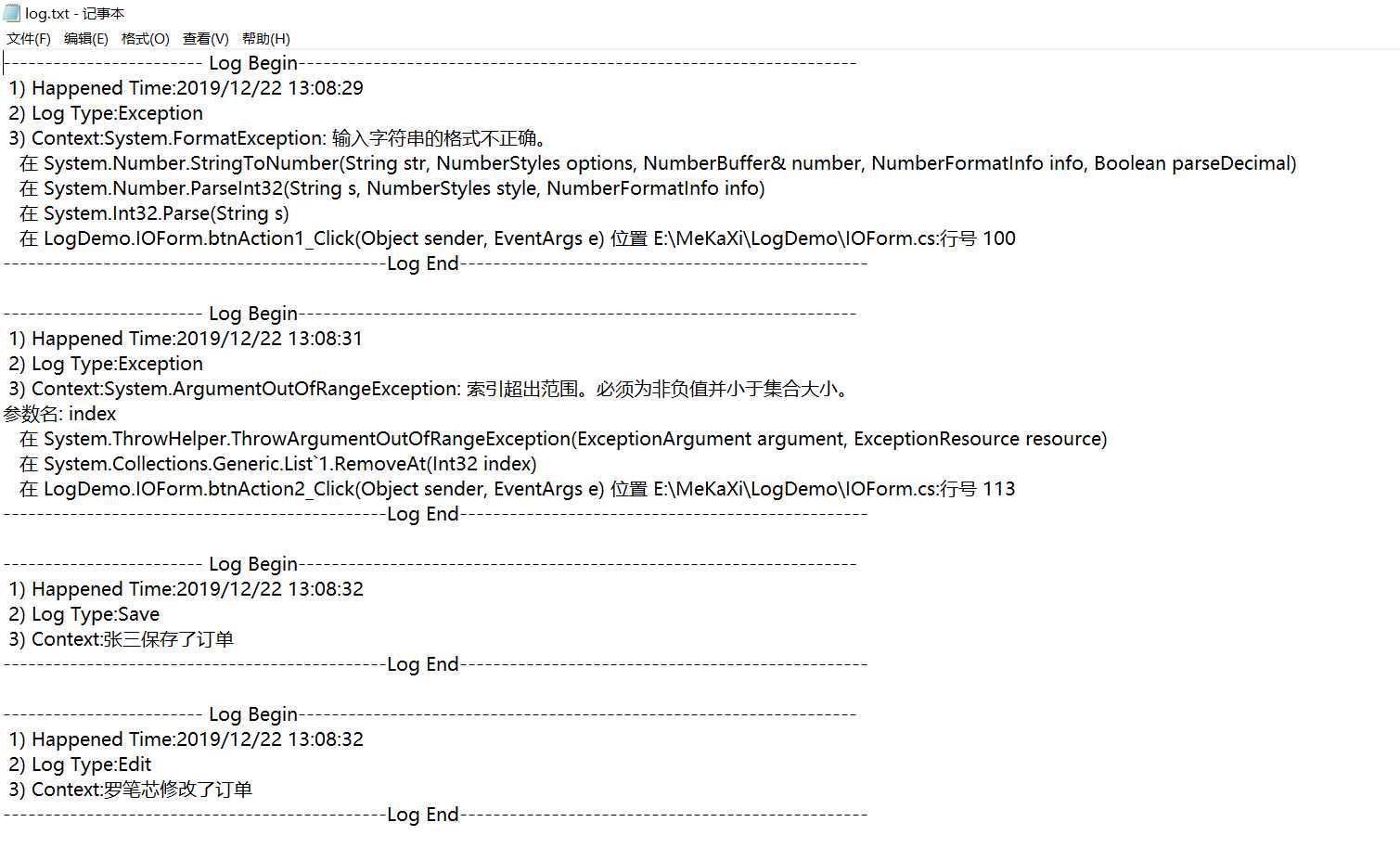话不多说,以下是简单的一个logHelper类和一个小demo
1.LogDto:主要封装一些记录日志用到的东西,比如日志信息和日志类型等等
public class LogDto{ public string message { get; set; } public LogType LogType { get; set; }}
2.LogHelper:日志帮助类
1)定义一个队列,当调用WriteLog方法时就把要记录的实体入队
2)定义一个委托,写日志的话可能会有多种形式,可以是写在文本也可以是写在数据库等.那么又可以定义方法WriteToTxt,WriteToDataBase等;
3)静态构造函数.开启一个线程监测队列里面是否有数据,这里就相当于观察者模式.当有数据的时候,观察者就需要做出对应的动作(WriteToTxt,WriteToDataBase)这里为了方便写在一个类里面,偷个懒吧。所以就又得先让他们和委托关联起来,当有数据的时候,让日志对象出列并调用委托就OK了
public class LogHelper { public static Queue<LogDto> queueList = new Queue<LogDto>() private static Action<LogDto> QueueAction; public static void WriteLog(LogDto logDto) { lock (queueList) { queueList.Enqueue(logDto); } } static LogHelper() { QueueAction = WriteToTxt; QueueAction += WriteToDataBase; //开启线程 Task.Run(() => { while (true) { if (queueList.Any()) { var logdto = queueList.Dequeue(); QueueAction.Invoke(logdto); } else Thread.Sleep(500); } }); } private static void WriteToTxt(LogDto logDto) { var path = Path.Combine(Directory.GetCurrentDirectory(), "log.txt"); StreamWriter sw = new StreamWriter(path, true, Encoding.UTF8); sw.WriteLine($"------------------------ Log Begin-------------------------------------------------------------------"); sw.WriteLine($" 1) Happened Time:{DateTime.Now}"); sw.WriteLine($" 2) Log Type:{logDto.LogType}"); sw.WriteLine($" 3) Context:{logDto.message}"); sw.WriteLine($"----------------------------------------------Log End-------------------------------------------------"); sw.WriteLine(); sw.Close(); } private static void WriteToDataBase(LogDto logDto) { //.. } }
3.Demo:一个简单的WinForm,模拟写日志的场景,这里就不贴代码了
4.执行结果
